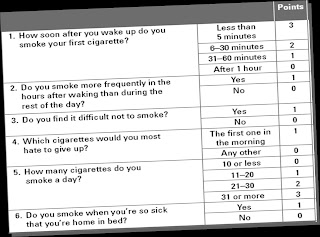Bullying by children in schools has serious mental health effects on the victim and the bully. Up to 25% of high school students report being victimised by bullies. 13% of victims have considered suicide. In rural India 31% of middle school students report being bullied (Kshirsagar 2007). Bullying is twice more prevalent in coeducational schools than in girl schools. The prevalence of bullying increases from 13% in the 3rd grade to 46% in the 6th grade. Bullying is higher in classes with more retained students.
Bullying occurs in a variety of settings that are an extension of your child's school life. Bullying can occur face to face, by texting or on the web (cyberbullying). Bullying is not a phase of growing up, it is not a joke, and it is not a sign that boys are being boys. Bullying can cause lasting harm - to the victim, the bully and the bully-victim (children who are bullied and also bully other children).
Bullying takes many forms
- Verbal: Name calling, teasing
- Social : Spreading rumours, leaving people out of groups on purpose, breaking up friendships
- Physical : Hitting, punching, shoving (5% in Indian schools)
- Cyberbullying
When is it bullying? It’s bullying when there are three features to the interaction
- Imbalance of power: People who bully use their power to control or harm. The victims may have a hard time defending themselves.
- Intent to cause harm: The person bullying intends to harm the victim
- Repetition: Incidents happen to the same person over and over by the same person or group
- Mutual arguments and disagreements
- Single episodes of social rejection or dislike
- Single episode acts of nastiness or spite
- Random acts of aggression or intimidation
Effects of bullying
(www.stopbullying.gov)Those who are victims are at a high risk for mental health problems
- Higher risk of depression and anxiety with increased thoughts of suicide
- More likely to have health complaints
- Have decreased academic achievement
- More likely to miss or drop out of school
- More likely to retaliate (12/15 shooters have a history of being bullied)
- Higher rates of alcohol/substance abuse
- More likely to get into fights, vandalise property
- More likely to be abusive towards partners, spouses or children later in life.
Is your child being bullied?
If your child has any of these features it is very likely they are being bullied in school- Comes home with torn clothing or missing belongings
- Appears sad, moody, depressed or anxious especially on returning home from school
- Prefers to be alone
- Is afraid of going to school
- Vomiting
- Sleep disturbances including insomnia and nightmares
- Frequently falling sick
- Headaches
- Bodyache is the next most common symptom in female victims. In male victims nightmares are the next most common.
- Become violent with others, gets into physical or verbal fights
- Get sent to the Principal’s office often
- Has extra money or new belongings which cannot be explained
- Will not accept responsibility for their actions
- Need to win and be best at everything
Do’s and Don’ts
For parents whose children are victims of bullying (Carr-Gregg 2011)Do NOT
- Tell the your child to ignore the bullying. This allows the bullying and its impact to become more serious
- Blame your child or assume that they have done something to provoke the bullying
- Encourage retaliation
- Criticise how your child dealt with the bullying
- Contact the bully or parents of the bully
- Communicate with your child
- Listen carefully. Ask who was involved and what was involved in each episode
- Empathise and reinforce that you are glad your child has disclosed this
- Ask your child what they think can be done to help
- Reassure your child that you will take sensible action
- Contact the teacher and/or principal and take a cooperative approach in finding a solution
- Discuss the matter in a face-to-face meeting. Stay calm. Take along any evidence you may have gathered. Ask three key questions
- How will this matter be investigated?
- How long will this investigation take?
- When will you get a follow up meeting to discuss the results?
- Contact school authorities if bullying persists and escalate your communications up the chain of command. Here’s where your paper trail comes in useful
ReferencesEvery child deserves an education free of fear
- Carr-Gregg M, Manocha R. Bullying - effects, prevalence and strategies for detection. Aust Fam Physician. 2011 Mar;40(3):98-102.
- V .Y. Kshirsagar, Rajiv Agarwal and Sandeep B Bavdekar. Bullying in Schools: Prevalence and Short-term Impact. Indian Pediatrics 2007; 44:25-28
- www.stopbullying.gov


